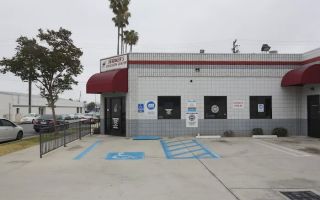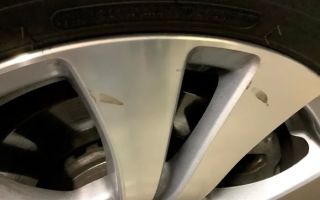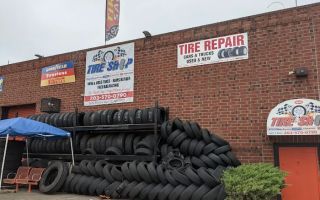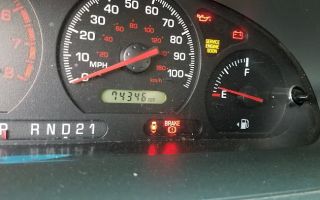There’s nothing more alarming than seeing steam rising from your car’s hood while you're driving. It’s easy to panic when your car starts overheating and you’re unsure of what caused the issue. Having experienced this situation myself, I can tell you that while it can be stressful, the situation is often fixable if you understand the causes and follow a systematic approach to resolve the issue. Here’s how to go about fixing a car that’s overheating and steaming, using a practical, step-by-step method based on my experience.
When your car begins to overheat and emit steam, it’s essentially a sign that your engine is too hot and there’s an issue with your cooling system. It’s crucial not to ignore the signs, as prolonged overheating can cause severe engine damage. Fortunately, I’ve learned that with the right knowledge and tools, it’s often possible to fix the problem yourself or at least diagnose it before seeking professional help. Let me guide you through the process.
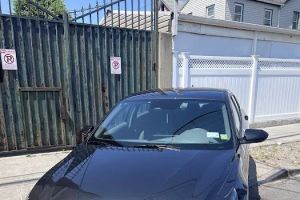
Junior Auto Body Solutions LLC
10409c Merrick Blvd, Jamaica, NY 11433, USA
1. Pull Over Safely and Turn Off the Engine
As soon as you notice your car steaming or the temperature gauge climbing into the red zone, pull over to a safe area away from traffic. Turn off the engine immediately. Allowing the engine to run in this condition will only worsen the overheating issue and could lead to irreversible engine damage. Let the engine cool down for at least 15 to 30 minutes before opening the hood to investigate further. Opening the hood too soon could result in burns from hot steam or coolant.

Premier auto solutions ny
532 Ray St, Freeport, NY 11520, USA
2. Check the Coolant Level
One of the most common reasons for a car to overheat is a lack of coolant. Coolant, or antifreeze, is essential in maintaining the engine’s temperature by absorbing heat from the engine and releasing it through the radiator. If your coolant level is low, the system can’t effectively regulate the engine’s temperature, leading to overheating.
Once the engine has cooled down, open the hood carefully. Locate the coolant reservoir—usually a plastic tank near the radiator—and check the coolant level. If the coolant is below the minimum line, this might be the source of your problem. If the coolant is low, you’ll need to refill it with the appropriate coolant for your vehicle. It’s best to refer to your car’s owner’s manual for the correct type of coolant. Never add coolant while the engine is still hot, as it can cause dangerous splashes or burns.
3. Inspect the Radiator for Leaks or Damage
Another common cause of overheating is a damaged or leaking radiator. The radiator is responsible for dispersing the heat that the coolant absorbs, and if it’s damaged or leaking, it won’t be able to perform this function properly. If you suspect that your radiator might be compromised, visually inspect it for signs of leaks or cracks. Look for coolant puddles under the car or wet spots on the radiator itself.
In some cases, the leak might be small and difficult to spot, but you may notice the area around the radiator is moist or the car has a strong antifreeze odor. If you find any leaks, you’ll need to repair or replace the radiator. Depending on your skill level, you may be able to do this yourself, or it’s best to take the car to a mechanic if the damage is significant.
4. Examine the Thermostat
The thermostat is another crucial part of the cooling system. It regulates the flow of coolant to the engine, allowing it to operate within the optimal temperature range. A faulty thermostat can get stuck in the closed position, preventing coolant from flowing properly and causing the engine to overheat. I’ve personally encountered this problem in the past, and it’s not always easy to diagnose because the symptoms resemble those of low coolant or a malfunctioning radiator.
If you’ve ruled out coolant levels and radiator issues, it’s time to check the thermostat. Typically, the thermostat is located near the engine block and connected to the radiator hose. If you’re comfortable with automotive repairs, you can remove the thermostat and test it by placing it in a pot of boiling water. If it doesn’t open or respond to heat, you’ll need to replace it. In some cases, it’s best to take the car to a professional to have the thermostat tested and replaced.
5. Inspect the Water Pump
The water pump is another key component of your car’s cooling system. It’s responsible for circulating coolant throughout the engine and the radiator. If the water pump fails, it can cause the coolant to stop circulating, leading to engine overheating. I had a situation where my water pump failed, and it was a costly repair, but fortunately, I caught it early enough to avoid further engine damage.
To check the water pump, look for any signs of leaks around the pump or the belt. If you notice any coolant leaks or a broken belt, these could be indications that the water pump is failing. Listen for any unusual noises, such as grinding or whining sounds, which could also suggest a problem with the pump. If you suspect the water pump is the issue, it’s best to replace it as soon as possible.
6. Look for Broken or Loose Belts
The serpentine belt or timing belt is responsible for driving components such as the water pump and alternator. If the belt is loose, broken, or slipping, it can prevent the water pump from circulating coolant, causing your engine to overheat. I’ve experienced this firsthand, and a loose belt can be a simple but costly issue to fix if ignored for too long.
Inspect the belts around the engine for signs of damage or wear. A worn-out belt may show cracks, fraying, or missing teeth. If you find that the belt is damaged or loose, it will need to be replaced. Depending on your skill level, you might be able to replace the belt yourself, or you may need to take the car to a mechanic to handle the repair.
7. Check for Clogged Radiator or Coolant Hoses
Over time, your car’s radiator and coolant hoses can become clogged with debris or mineral buildup. A clogged hose or radiator prevents coolant from circulating properly, causing the engine to overheat. I once found that my coolant hose had become clogged, which caused a minor overheating issue. The solution was relatively simple—replacing the clogged hose.
If you suspect that the hoses are blocked, inspect them for signs of bulges or leaks. You can also try flushing the radiator with a radiator flush solution to remove any buildup or debris inside the system. If the hoses themselves are cracked or damaged, you’ll need to replace them.
8. Test the Fan System
Modern vehicles have one or more electric fans that help cool the engine by pushing air through the radiator. If these fans aren’t working properly, it can lead to overheating. When my car’s fan stopped working, I found out the issue was a blown fuse, which is a relatively simple fix. However, in some cases, the fan motor itself may need replacing.
To test the fan, start the car and let it idle while monitoring the temperature gauge. The fan should kick on when the engine reaches a certain temperature. If the fan doesn’t turn on, check the fuses and relays first. If everything seems in order and the fan still doesn’t work, you may need to replace the fan motor.
By following these steps, you should be able to troubleshoot and resolve most overheating and steaming issues in your car. While some repairs may require professional assistance, many of these solutions can be done at home with the right tools and knowledge. Always keep an eye on your car’s temperature and cooling system to avoid future overheating problems. Remember, preventing overheating is often much easier and less costly than fixing the damage caused by it.


